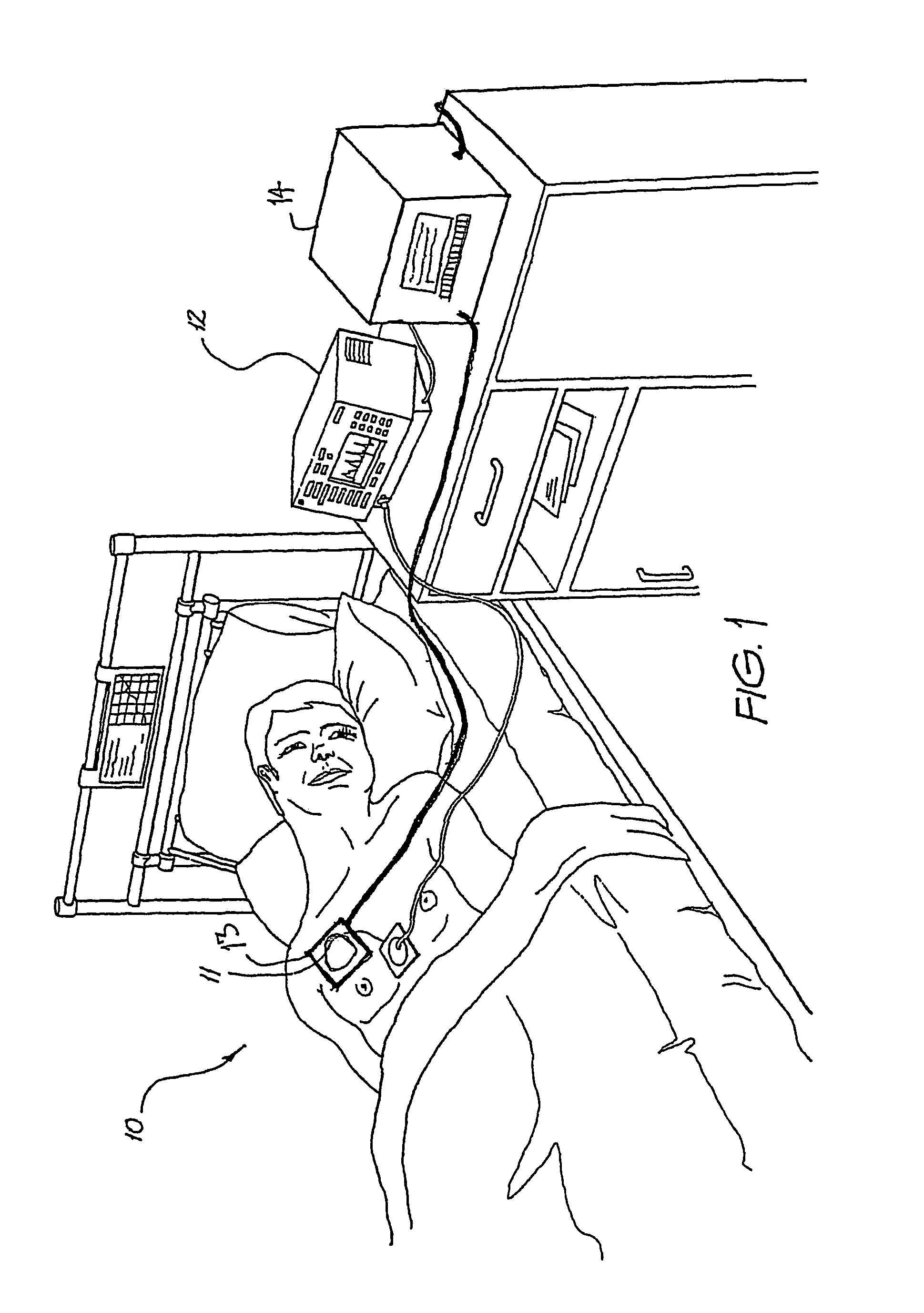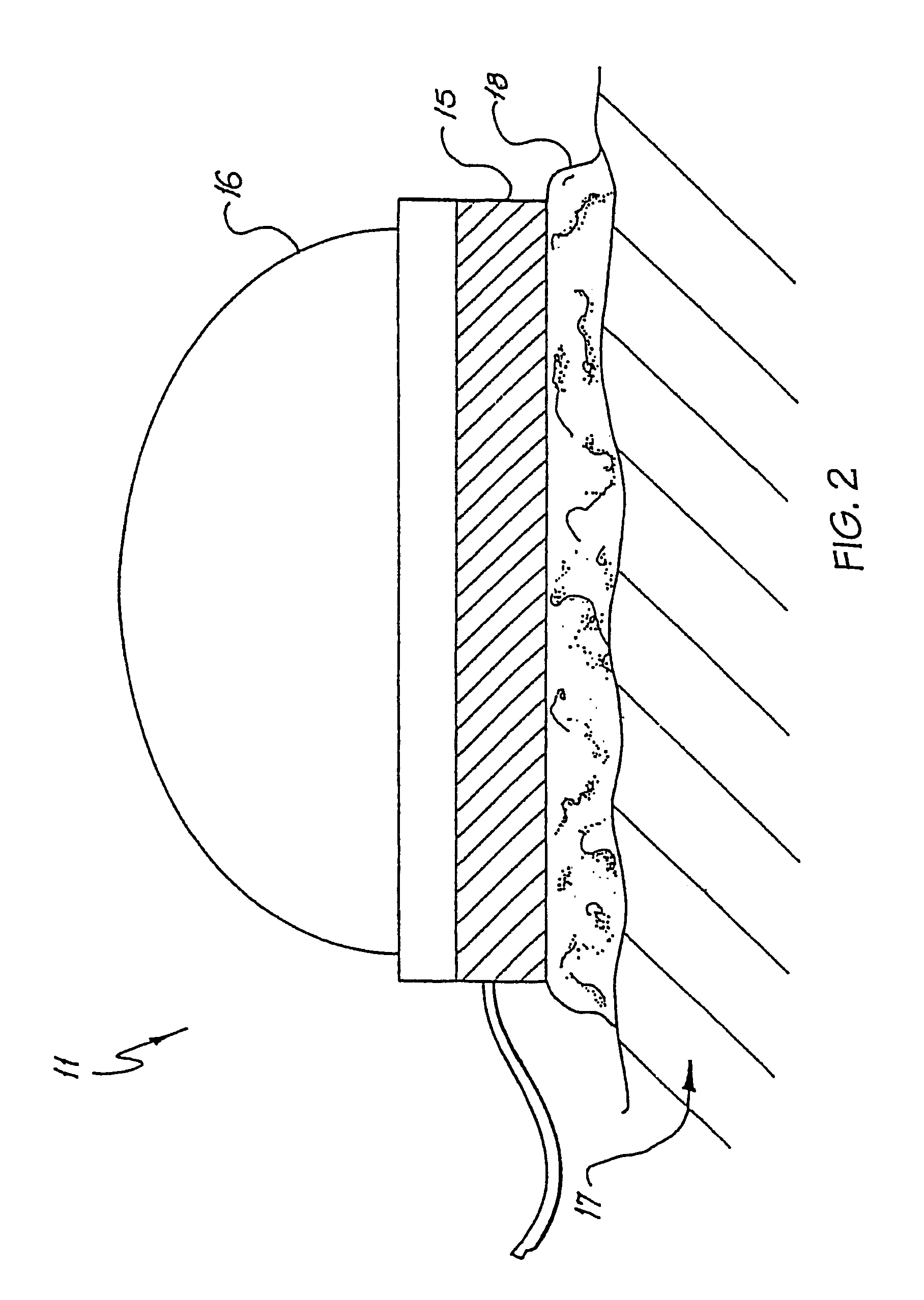Exercise responsive pacemaker tuning method using Doppler blood flow measurements to adjust pacing for optimized flow
a pacemaker and exercise-responsive technology, applied in the field of exercise-responsive pacemaker tuning, can solve problems such as reducing heart rate, and achieve the effect of optimal results
- Summary
- Abstract
- Description
- Claims
- Application Information
AI Technical Summary
Benefits of technology
Problems solved by technology
Method used
Image
Examples
Embodiment Construction
[0016]In the preferred embodiment, continuous wave ultrasound techniques are utilised to transcutaneously measure the cardiac output of a heart operating with a cardiac prosthetic pacing device. Through utilisation of ultrasound techniques, a measurement of cardiac output can be obtained as a function of rate and volume. The ultrasound techniques also provide a measure of stroke volume thereby providing information for optimisation of settings of the pacemakers.
[0017]Turning initially to FIG. 1, there is illustrated one arrangement utilising the preferred embodiment. In this arrangement, a patient 10 has attached two non-invasive monitoring devices 11-13. Each of the two devices 11-13 are interconnected to aprocessing and display unit eg. 12, 14. Each of the units 12, 14 includes an internal computer processing means, a display and a series of control buttons for controlling the functionality of the device. Each of the devices 12, 14 are further networked to a base station or the li...
PUM
 Login to View More
Login to View More Abstract
Description
Claims
Application Information
 Login to View More
Login to View More - R&D
- Intellectual Property
- Life Sciences
- Materials
- Tech Scout
- Unparalleled Data Quality
- Higher Quality Content
- 60% Fewer Hallucinations
Browse by: Latest US Patents, China's latest patents, Technical Efficacy Thesaurus, Application Domain, Technology Topic, Popular Technical Reports.
© 2025 PatSnap. All rights reserved.Legal|Privacy policy|Modern Slavery Act Transparency Statement|Sitemap|About US| Contact US: help@patsnap.com



